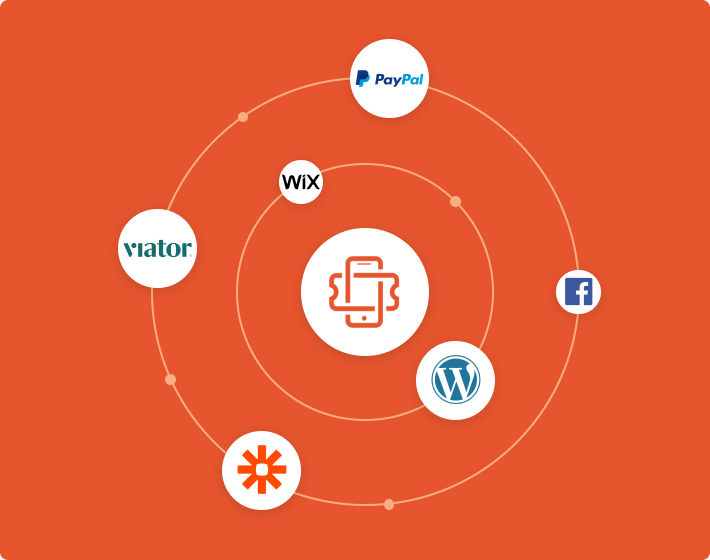Are you thinking of starting a trampoline park business? Great idea.
The indoor park industry is growing and trampoline parks are no exception.
But this does not mean that every business started in this sector will stand the test of time. Not at all.
So what do you need to succeed?
Here is a guide we’ve created to help you set up a competitive trampoline park.
We’ll cover everything from identifying your target market and creating a plan to actually launching your business.
Without wasting any time, let’s dive right in.
1. Research your target market
In any business, the customer experience should drive decision making. So, as you start your trampoline park, identifying your target market is important.
This calls for a little market research. Find out who your target customer is, what they do, what their pains are, and how you can reach them.
You will quickly discover that trampolining can appeal to people of all ages. Children, teenagers, and adults. Through customer segmentation, you can meet the needs of each of these groups of people.
In addition, think about the financial aspect of running this business as early as possible to avoid a negative ROI or even losing your whole investment. Start with a rough estimate of your potential revenue and profits.
Estimate your target revenue
While doing your market research, estimate the revenue for your upcoming venture. Do a thorough trampoline park industry analysis to get finer details like additional sources of revenue such as food, drinks, and merchandise.
Having these details will help you decide if your business is likely to be doing well or struggling after running for some time.
Estimate profits
Out of the revenue from trampoline parks, how much is profit? Making a good profit will keep you in business and so there’s a need to check if the margins will be worth your while. This is especially important since beginning a trampoline park requires a high cost of investment (as you will see below).
Keep in mind that you will have to wait sometime before you start seeing a return on your initial investment. According to the International Association of Trampoline Parks (IATP), this may be approximately 8 to 12 months on average.
2. Learn about the industry
So now you know who your trampoline park customers will be and an estimate of the revenue and profit. The next step is researching your competition.
This includes assessing current players in the sector to find out how they run their businesses, what they charge, and what they offer.
In this stage, you should aim to define your market positioning using differentiation and a suitable price point.
Differentiate from competitors
Knowing your competitors will help you decide how to differentiate from them.
Begin by outlining your value proposition based on what your target customers may be looking for. Find out your customers’ pain points in order to create your Unique Selling Point (USP).
This is a brainstorming exercise so don’t worry about getting it perfect right away. Get your creative juices flowing and come up with ideas that can make people choose you over your competitors.
The more differentiated you are, the more likely you are to attract customers and beat your competition.
Decide what to charge customers
Pricing is a tough nut to crack.
You want to hit that sweet spot between too expensive and being perceived as cheap.
So consider aspects like the geographical location of your park and the typical industry charges. Next, try to add the necessary premium based on the USP you identified in the previous step.
Be prepared to experiment with pricing in order to reach the optimal point and maximize profit.
3. Calculate startup and ongoing costs
A custom-made trampoline park has a high startup cost. The initial amount mostly goes into buying the trampoline equipment and supplies and setting up the court.
To open an indoor trampoline park of between 2322.6 and 3251.6 m2 (25,000 – 35,000 square feet), IATP estimates that you require €1 to 1.6 million for capital. This may vary based on your geographic location and the different activities you are going to offer customers.
As you begin running your business, other costs will be incurred. These ongoing costs cater for things like rent, utilities, maintenance, insurance, marketing, and labor costs among other expenses.
Let’s delve a little further into how to prepare for the startup costs.
Recommended reading: 5 Trampoline Park Trends and How to Take Advantage of Them
Estimate equipment and supplies costs
It’s important to have quality equipment for your trampoline park. Otherwise, you risk increasing the chances of accidents at the court.
Some of the equipment and supplies you may need include:
- Trampoline flooring
- Foam pit
- Basketball hoops
- Basketballs and dodgeballs
- Climbing walls
- Trampoline socks
Before purchasing any equipment, do some window shopping and look for good quality at the best price.
Estimate insurance costs
Another important investment in your business is your trampoline park insurance cost.
There are different policies you can get to protect your finances.
Discuss with your insurance provider which policies to pick. And remember to prioritize any that may be a legal requirement in your locality.
4. Create a business plan
Planning increases your chances of accomplishing your business targets. That’s why it’s important for you to create a trampoline park business plan before you set it up.
So, what should you include in your plan?
Try to keep it simple and focus on two things: 1) what are your business goals and 2) how you plan to achieve them.
Here’s a list of important sections to help you get started:
- Executive summary
- Company description
- Products and services
- Market analysis
- Strategy and implementation
- Operations and management plan
- Financial plan and projections
Having this business plan will keep you focused on where your business is headed and help you make informed decisions along the way.
5. Start marketing and promotion
You are now getting closer to launching your trampoline park. But before then, we advise on marketing and promoting your business.
The benefit of doing this earlier is so you can validate your assumptions before putting in tons of cash into the business.
The best way to do this, of course, is by talking to people.
Network and define your marketing channels
Networking with other entrepreneurs is a great way to jumpstart your journey to business success.
One way is to attend events and meetups. There you can meet seasoned business owners and exchange ideas and tips for building and growing your business.
Another group of people to network with are influencers in the leisure industry. By interacting with influencers, you can understand your potential customers more. This can also present an opportunity to partner with people who can market your trampoline park.
Along with this, you need to define your marketing channels. Here are some of the best places for promoting your trampoline park:
- Your website
- Social media e.g Facebook, Instagram, and YouTube
- Review sites like TripAdvisor
Establish an online presence and prepare marketing collateral
When people want to find a place for leisure and fun activities, they are likely to first search online. To hook and convert them into your customers, create an attractive and detailed website.
A social media presence is also essential. Research shows that the average person spends about two hours a day on social media. This is, therefore, a good chance to strategically position yourself where your potential clients are already actively searching for information.
The most popular platforms are Facebook, Instagram, Pinterest, and YouTube.
Another great way to sell yourself is directly on search results using Reserve with Google. The best part about this is that if you’re a Regiondo user, you can easily get your trampoline park listed on Reserve with Google. Just check out our help center for details on how to connect.
As you create your online footprint, prepare some marketing collateral as well. Put up flyers, hand out brochures, and talk about what your trampoline park has to offer.
6. Handle the legal aspects
In order to minimize risk, make sure you’ve met all legal requirements well ahead of time. This is crucial before you start making big investments in your trampoline park venture.
Register your business name
You can visit the local business registrar’s office to register your business name. This is not necessarily the same name you will use for your trampoline park. So you don’t have to overthink it.
Register for taxes
Get information on the taxes businesses should pay in your locality and register for these taxes before you start trading.
Obtain necessary insurance, permits, and licenses
To avoid getting some hefty fines or even being shut down, make sure you acquire all required permits and licenses. These may vary from place to place so check with the city, town, or county clerk’s office for more information on what is required in your region.
7. Design your trampoline park
This is one of the most exciting steps. Designing your trampoline park. This is where you begin directly working on your dream jumping zone.
The following are some of the important things to note as you prepare to set up.
Identify an ideal location
Choosing the right location is essential for your business’ success.
One of the factors to consider is proximity to customers. Setting up your trampoline park where there’s already people traffic can boost your own business’ traffic.
Shopping malls and retail parks are some of the ideal places for having a trampoline park. On the other hand, if you are leasing a building that’s on its own, make sure it meets the standards for an entertainment center.
The competition in the area, however, should be something to keep in mind when looking for a location. Avoid areas with several other trampoline parks already in operation.
Another factor to consider is cost. Buildings and malls in prime locations are most often more expensive than those in low-traffic locations.
At the end of the day, pick a location that’s within your budget while giving you as many benefits as possible.
Find the right trampoline park manufacturers
The right trampoline park manufacturers are professionals who can ensure they’ve created a park that’s up to standard. Look for reputable suppliers so you build a high-quality trampoline park.
8. Launch and grow your trampoline park business
After following all the steps, you’re probably very excited to open the doors of your amazing new trampoline park. There are a few things you can do to increase the chances of having a successful launch.
First, inform as many people as you can. Advertise the launch through the marketing channels you established earlier. To attract even more people to your launch, you can make an offer for the day. Group bundles, discounts, or a free snack can work great here.
After launching, let your business take off on a high note. Provide the best services and experience for all your customers so they can return and even inform their friends and family. This is one of the best ways to grow.
Continue promoting and marketing your trampoline park as well. While the launch may be successful, often there is a novelty effect that can increase initial demand which then slows down. Be prepared to continuously develop and market your park so you have a consistent stream of customers.
Conclusion
As you can see, starting a trampoline park business is definitely not easy. You have to put in the work in order to see success.
In summary, follow these steps from our guide to help you on the journey to your business’ success:
- Identify your target market
- Do thorough research
- Estimate costs
- Map out a business plan
- Start marketing early
- Comply with all legal requirements
- Design your trampoline park
- Launch and grow your trampoline park business
So there you have it, that’s our step-by-step guide for starting a trampoline park in 2021.





